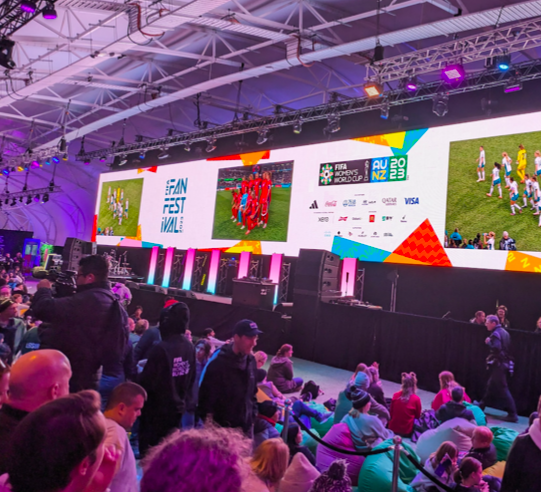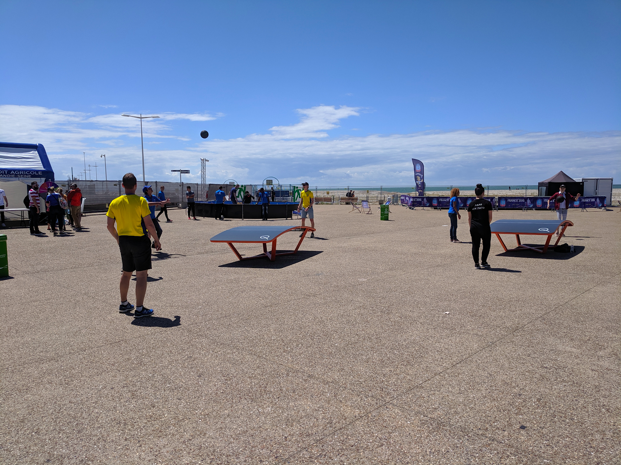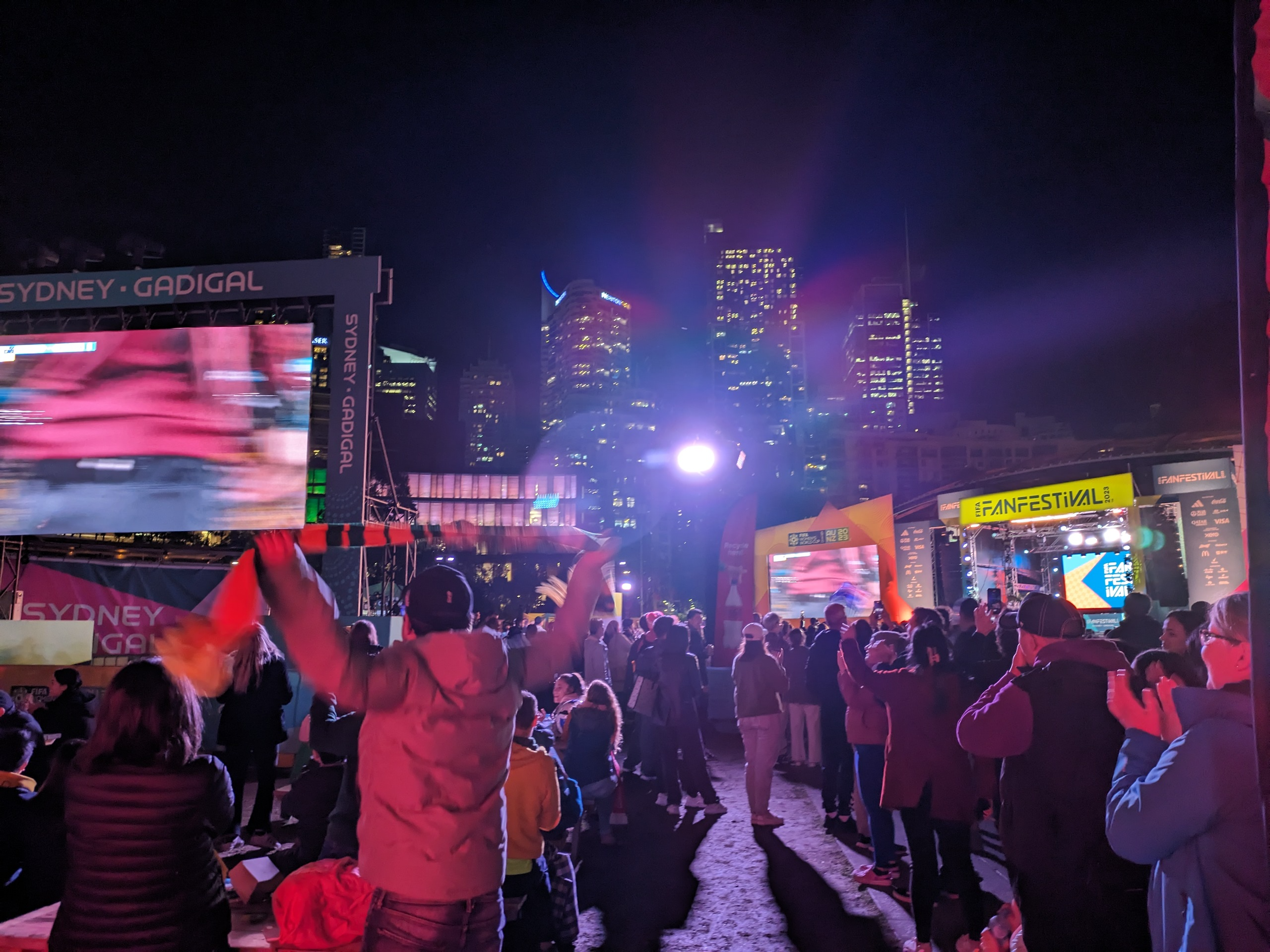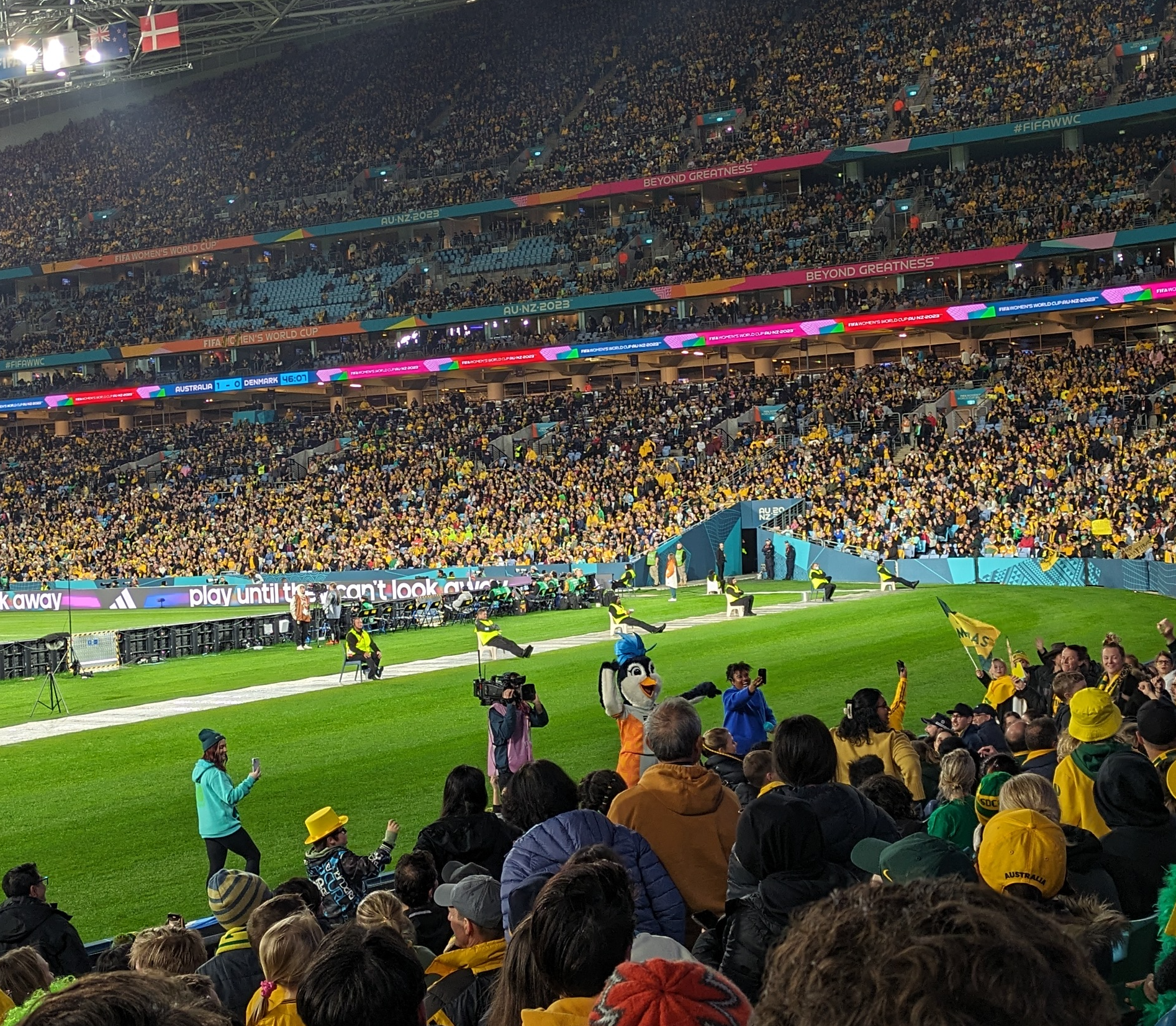FIFA’s Fraught Recognition of the Women’s World Cup as Marketable Media Event
Charlotte Howell / Boston University

In 2023, the global broadcast rights to the FIFA Women’s World Cup were uncoupled from the rights to the Men’s World Cup. From 1995 to 2019, the rights were structured as an ad-on to the men’s tournament, but for 2023, broadcasters could set solo bids for just the women’s tournament. On the one hand, this helped to ensure investment in the women’s tournament by allowing broadcast companies to pay in a way that marked clear value for the women’s game. On the other hand, FIFA itself expected a level of monetary investment from many countries’ broadcasters fell far below, with reports of even supportive media companies offering significantly less than even 8% what they paid for the 2022 men’s tournament. Although the degree of discrepancy was surprising, it illustrated the effects of persistent undervaluing of women’s soccer amplified by the lack of an infrastructure and roll-out that might have built toward the goal for which FIFA was aiming.
Although some countries like England and Japan had been building their domestic women’s leagues in recent years and supporting their national teams at a higher level than in the past, most women’s teams struggle with monetary and institutional support let alone patterns of broadcast success that could lead to higher rights bids. Added to the lack of foundational media infrastructure, the tournament was scheduled a month later than it often occurred in the year, which meant that the last week of games overlapped with major European Men’s Leagues like the Premier League and La Liga. The same leagues suspended play during the Men’s World Cup in the fall of 2022 to both allow players to compete and avoid attention competition. Like so many of FIFA’s strategies regarding the Women’s World Cup as a marketable media event, the discourse of empowerment overshadowed the actual hard work of investment that would treat the tournament as such and not just an off-shoot of the main show (men’s soccer). The broadcasters who did acquire rights tended toward paywalled showings and limited free broadcast games, such as in Australia and Aotearoa/New Zealand, despite hosting the tournament. Fox Sports’ coverage in the U.S. fared a bit better with close to half games available on the Fox Network (28 of 64) but still fewer than the 2022 Men’s World Cup (34 of 64 matches). And these are the countries with the most significant investment in the game! Even the most successful Women’s World Cup yet faced a dominant media strategy that implied its persistent niche status. The notable exception being the United Kingdom which split rights between BBC and ITV, both free-to-air, representing the most accessible and wide-appeal approach to the tournament.
Both media rights, with attendant programming strategies, and the atmosphere represented by images of hordes of merchandise-adorned fans at the tournament are key to promoting the women’s game as exciting, engaging, and above all a marketable sports media spectacle.
On the ground of the 2023 tournament, the host countries and FIFA itself seemed to finally realize that the women’s tournament could be a significant money-making venture. In 2015 in Canada and in 2019 in France, it was difficult to find tournament merchandise outside of the immediate vicinity of the stadia throughout much of the tournament. In France, FIFA set up “Fan Experience Villages” in the host cities, but their opening days were limited to games played in the town and certain select other games (French Women’s National Team games and late-tournament play). Moreover, the Fan Experience Villages in 2019 had few food options, some activities, and most surprisingly little merchandise on sale. For example, the Le Havre fan experience village gave away a few small FIFA branded items (a drawstring bag and stickers of the mascot, Ettie the chicken), but nowhere to buy a match-day scarf or any supporters’ gear for the game being played or the tournament in general. The Fan Experience Villages presented more a way to occupy visitors to the city in the hours before the game, not an opportunity for earning revenue or building hype. Moreover, there was very little attention to the broadcast of the games, usually with one large screen for display in an area that was not primarily oriented to viewing matches.

In 2023 in Australia and Aotearoa/New Zealand, however, the tournament set up FIFA Fan Festivals in each host city: fully-fledged entertainment districts that were open for all matches of the tournament (showing live on multiple screens) with FIFA merchandise stores and local food vendors as well as concerts and cultural performances around matches. Moreover, the crowds at the Fan Villages provided easily accessible images and interviews for news crews reporting on the tournament and its hype. In addition to treating the tournament as a multi-billion-dollar media and spectator event, the branding shift from “Fan Experience Villages” to “Fan Festivals” brought the 2023 women’s tournament in line with the men’s tournament which had utilized FIFA Fan Festivals since 2002. At the Sydney/Gadigal Fan Festival, the FIFA store had two levels and carried merchandise for every team in the tournament and multiple tournament-specific souvenirs while also offering multiple screens and a half-dozen food options that reflected local cuisine (as well as a McDonald’s [a key sponsor of the tournament] meant to look like a giant French fry container).

On game days at the Fan Festivals, inside the stadia, or just walking around the host cities, fans in supporters gear or official FIFA apparel were plentiful. The visible prominence of supporters of the tournament were amplified by local, national, and international journalists as well as significant social media engagement. Images of crowds watching games, wearing their support, and making it undeniable that the Women’s World Cup was worth hosting and worth paying millions of dollars/pounds/euros/etc. to broadcast. In 2023 FIFA seemed to finally realize that the Women’s World Cup could be a multimedia and merchandizing juggernaut. However, this shift remained fraught as much of it was done seemingly last-minute and without acknowledgement of the reliance on women’s soccer fans to make the giant leap FIFA took in 2023—without laying the groundwork one might expect—worth it both for the experience of the tournament and the marketable media representation of the event.

From the first time FIFA sanctioned a global women’s football tournament, the 1991 tournament which was officially called the FIFA World Championship for Women’s Football for the M&M’s Cup to avoid risking the “World Cup” brand, FIFA’s ambivalence toward the marketability for the women’s tournament has persisted. This year FIFA made significant strides increasing the payment for teams and players at the tournament, but it was far below the prize money for the Men’s World Cup. This Women’s World Cup made over half a billion dollars in revenue for FIFA, but it did so while reportedly falling $100 million short of its $300 million goal for media rights deals. FIFA signaled that it believes the Women’s World Cup can succeed and grow, but the way it did so relies on a lot of work from entities other than the world football governing body. Perhaps FIFA President Gianni Infantino unintentionally summed up FIFA’s approach best at a press conference before the 2023 final: “You have the power to convince us, men, what we have to do and what we don’t have to do. You do it, just do it” (qtd. in Morse). While FIFA’s approach to the Women’s World Cup over the last eight years has come a long way in recognizing it as a valid media spectacle based in a vibrant on-the-ground experience, much work still needs FIFA to take initiative and not just wait for women to “just do it.”
Image Credits:
- Fan Festival in Tāmaki Makaurau/Auckland for Aotearoa/New Zealand vs. Switzerland and Norway vs. the Philippines, July 30, 2023 (author’s personal collection)
- Le Havre Fan Experience, June 20, 2019, hours before US vs. Sweden game (author’s personal collection)
- Sydney Fan Festival July 27, 2023 during Australia vs. Nigeria (author’s personal collection)
- Tournament Mascot Tazuni and a crowd of 75k fans at Stadium Australia, August 7, 2023 (author’s personal collection)
Morse, Ben. “FIFA President Gianni Infantino Says Women Should ‘pick the Right Battles’ to ‘Convince Us, Men, What We Have to Do’ in Fight for Equality.” CNN, 18 Aug. 2023, https://www.cnn.com/2023/08/18/football/gianni-infantino-fifa-women-world-cup-2023-spt-intl/index.html.